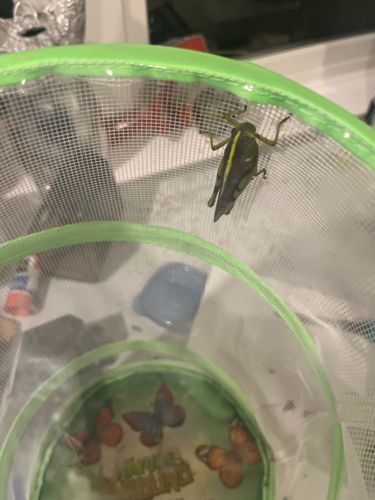Grasshopper
Scientific Name: Caelifera
Order & Family: Orthoptera (Order), Acrididae or other families within Caelifera (Family)
Size: 2 cm to 13 cm (0.8 to 5 inches)

Natural Habitat
Grasslands, meadows, fields, and other open grassy areas, often found in gardens and agricultural lands worldwide.
Diet & Feeding
Herbivorous, primarily consuming grasses, leaves, and other plant matter. Some species may eat crops, making them agricultural pests.
Behavior Patterns
Grasshoppers are typically solitary, but some species can form large swarms, especially under favorable conditions. They are known for their strong jumping abilities, used to evade predators. Males often produce sounds (stridulation) by rubbing their hind legs against their wings to attract females.
Risks & Benefits
Risks: Can be significant agricultural pests, causing damage to crops. Benefits: Serve as a food source for various animals, including birds, reptiles, and mammals, playing a role in the food chain. They also contribute to decomposition by consuming plant material.
Identified on: 9/18/2025